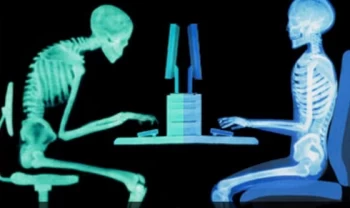
Cervical spine arthritis
Many people have heard that cervical spine arthritis occurs as a “normal aging process.” While it’s certainly true that arthritis gets worse over time, not every person develops arthritis in the same way. For example, some individuals develop arthritis in their 40’s-50’s and others have no arthritis at this age.
This would have to mean that there are differences between people who develop cervical spine arthritis and those that do not. Understanding what these differences are is important for identifying risk factors and early signs of this condition.
There are many different names that are used to describe cervical spine arthritis such as osteoarthritis (OA), degenerative joint disease (DJD), spinal degeneration, and bone spur formation. These are all terms that describe the same process of advanced wear and tear to the cervical spine and are not the same as other types of arthritis that are associated with autoimmune conditions (i.e. Rheumatoid arthritis).
There are certain characteristics among individuals with cervical spine arthritis that are consistent including:
- History of whiplash or neck trauma
- Decreased or asymmetrical neck range of motion
- Neck pain
A variety of other symptoms are likely to be present in patients with cervical spine arthritis, but these three criteria help to paint a picture of the “average” person suffering from this condition.
The stages of spinal degeneration
There are stages of spinal degeneration that occur over time and these individual stages are easily identified by a qualified healthcare provider such as an upper cervical chiropractor. In the early stages of cervical spine arthritis, the normal alignment of the cervical spine becomes compromised due to some sort of trauma.
This can be either a large trauma such as a motor vehicle collision, whiplash, fall, or other jarring force. It may also be caused by consistent and repetitive smaller traumas over time such as poor posture, improper ergonomics, one-sided activities, etc. For most patients with cervical spine arthritis, a combination of these factors is likely underlying their condition. The loss of the C-shaped curvature of the neck is a primary risk factor for developing spine arthritis.
The second stage of cervical spine arthritis is when degenerative changes start to take place including bone spur formation, thinning of the discs between the spinal segments (degenerative disc disease) uneven spacing between spinal segments, and instability of the spine causing episodes of neck pain.
Stage three of cervical spine arthritis involves more prominent degeneration including prominent bone spurs (including pinched nerves), chronic muscle tension and pain, significantly decreased range of motion, and severely worn-down intervertebral discs (IVDs).
The final stages of spinal degeneration include advanced spinal decay, potentially irreversible nerve damage, and grossly diminished spinal function. In these advanced stages, pain and other symptoms are chronic and experienced daily with noticeable effects on the ability to perform hobbies and activities of daily living.
What causes progressive degeneration of the cervical spine?
The spine serves as the structural foundation for the body, which means that it needs to be oriented properly for maximum stability (much like the foundation of a building). If the foundation of your home were to shift away from its normal level position, you could expect that issues are likely to follow. In the same way, the spine will develop issues if left unbalanced over time.
You may recall that the progression of cervical spine arthritis begins for many individuals with a loss of the C-shaped curvature of the neck. Without its normal structural position, the discs of the cervical spine become stressed under the weight of the head. As these discs become thinner over time, the joints (or “knuckles”) of the neck will start to jam and develop wear and tear.
Over time this gradual but persistent stress causes bone spurs to form around the joints. Without returning the orientation and alignment of the cervical spine to its proper state, this process will continue. Symptoms are usually inconsistent and mild in the early stages leading to a delayed diagnosis and treatment. However, as cervical spine arthritis progresses, symptoms become more consistent and severe.
What can be done to prevent this process?
As they say, an ounce of prevention is worth a pound of cure. Having a spinal evaluation periodically (like your dental checkup) will allow you to catch these problems early on. Early diagnosis and treatment are essential for maximum recovery. A comprehensive cervical spine evaluation should be performed following any major trauma such as a car accident, concussion, fall, etc.
What do you do to manage symptoms in the later stages?
Even if you’ve been diagnosed with cervical spine arthritis, there is hope for conservative treatment. There is a focused area within the chiropractic called Upper Cervical Chiropractic that is very effective in these situations. Upper Cervical Doctors perform a thorough evaluation of the cervical spine in order to determine the severity of your degeneration, the specific breakdowns in your alignment, and the proper and effective way to care for you.
Blair Upper Cervical Doctors have a long history of managing patients with cervical spine arthritis effectively. These doctors do not use traditional chiropractic manipulation to correct the cervical spine, which means no twisting, popping, or cracking of the neck. A gentle, precise, and effective correction is made only when necessary to restore the alignment, mechanical motion, and structural integrity of the cervical spine.
To find a Blair Upper Cervical Doctor near you, search
the directory at the Locate a Doctor tab above. Blair doctors
always respect the body’s ability to recover given the proper
support, and many patients with cervical spine arthritis have found
lasting relief and improved quality of life with Blair Upper
Cervical chiropractic.







Leave a comment